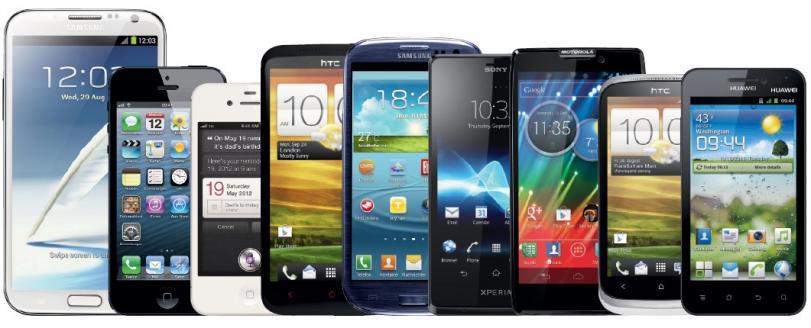If you’re a 20s something kid who grew up with non-digital technology, especially at school, you’ll know that a lot has changed as a result of the digital revolution. This revolution has also given rise to the term digital asset, a term used to describe all or any of the following, but not exclusive to either one:
- Files, including but not limited to, e-mails, e-documents, audio content, motion videos, and any other relevant digital files.
- Something stored in a binary language on a digital appliance like desktop computers,laptop computers, portable multimedia players, tablets and phablets, and even storage devices, like pen drives and SD cards.
- Any digital file, document or platform that is of monetary or emotional value or both, including bank accounts, which are the most easily accessible.
- A hard product, that primarily depends on digitization of data for rendering desired services
But, the discussion right now is about the type of digital assets that are suitable for the modern age child. And seeing that everything is eventually going to go digital, foregoing paper and cardboard completely, let’s take a look at the top 10 digital assets that every smart kid should own, and why.
- Blog or Website

Everyone these days either maintains a blog a runs a full-fledged website, and there’s no reason that a kid shouldn’t be doing the same. Blogs and websites not only expose kids to a wide range of people, but it can also instill a sense of responsibility at an early age, where one has to routinely update their site or blog in order to attract viewers to come and view their content. And it’s pretty obvious that nowadays if someone isn’t found on Google via an anchored link to a blog or a website, they are often considered to be non-existent.
- Online Store

Although not something you would consider a children’s school aid, maintaining digital assets such as an e-store at such a young age, again instills them the real-life sense of ownership, responsibility and accountability. And as with all things digital, the world of ecommerce is not lagging behind, with every possible SME and MNC brand selling their goods and services online. So, if a kid wants to grow up to become a business man, the traditional brick and mortar shop system won’t really prepare them for what difficulties lay ahead. All this, should be done with strict parental supervision of course, because no one’s really going to leave the fate of an online business in the hands of a primary or high-schooler.
- Smartphone

This is an obvious as statistics reveal that over 100 million smart phones landed in the hands of young kids who were still in school. Now a mobile phone is a great way for parents to keep tabs on their kids, when they’re not around, but that is also where the problem lies. Modern smartphones are getting smarter by the minute, allowing anyone and everyone to have access to the abundance of useful information, as well as the dark side of the internet. So, for anyone contemplating buying a smartphone for their young child, it’s recommended that a child protection or blocking application that cannot be removed should also be installed.
- Social
Generation-X is more like generation-now, with today’s kid growing up around things like the Internet and social networking, something that a 80s or even 90s kid had no idea about. This digital upbringing has led many children to grow up with the internet entwined in their DNA, many of whom never leave it. Social interaction is good for anyone, especially kids. But being just that, they are curious and naïve and there’s no shortage of people out there waiting to exploit innocent little children. And while it’s a great way to connect to friends and relatives across the globe, it is also a den for anti-social elements that are always lying in wait. So, encourage healthy social interaction with people of a similar age, with one eye on their social networking activities.
- Content
In the 21st century’s knowledge-based economy, content defines who you are. And seeing that defining something by what it is, nothing is more impressionable and curious that a school kid. Content has become the foundation of anyone’s online presence and teaching kids how to create, manipulate and manage content at an early age will not only raise them to be smarter, but will also allow them to become flawless in the art of content creation. This makes it an ideal digital asset for young children. But again, content creation for kids might be a culmination of what they’ve been exposed to, leaking it onto the internet. So, exercise vigilance in this case as well.
- Online Library Access

Online library access is already available at every ivy-league and premium college or university, and is slowly making its way to primary and higher secondary education. This is a must for any 21st century child because not only does it provide depths of information regarding courses, study material, etc., but is completely managed by a school’s administration system, making all the content fairly child-friendly. So, kids can exploit this digital asset with nearly no negative repercussions.
- Pen drive/Flash drive
Memory products like USB pen and flash drives have come a long way since their inception in the early 2000s, and has become a vital digital asset to anyone from CEO-level individuals to school kids. And with the advent of the digital age completely replacing traditional forms of note taking and content storage, a pen drive can be an indispensable tool for budding young geniuses. The pen drive, with its integrated Universal Serial Bus (USB) interface, is a safe and convenient method of kids to exchange and transport data to and from school or anywhere else.
- Secure Digital (SD) Cards
SD cards are non-volatile memory devices that can be used extensively in a number of portable devices including, smartphones, digital cameras, and even handheld consoles, and tablets. It is another versatile storage device that is temporarily integrated into a digital device to store any type of data. Again, it’s recommended to exercise caution as to what goes in and out of such devices.
- E-book reader
An E-book reader, or e-reader, is a portable electronic device that has been designed for the sole purpose of reading e-books, articles, periodicals, and any other kind of readable material, making it the text book, novel and even audio player for the up and coming bibliophile. E-books provide better screen readability than paper, especially in bright lighting scenarios, along with a long battery life.
- Vocab Building Apps
Vocab building apps are great for kids of any age, whether it’s a toddler learning to speak or a college soft more looking to spruce up their dictionary. These apps are usually free to download and come with entire wordlists, whose parameters can be set according to age or proficiency. They are a fun way of learning new words and improving one’s language skills, using fun games like scrabble, etc. to teach new words.
When it comes to digital assets, kids might not be on the forefront of such a discussion, but today’s digital age has made them a tool to be able to keep up with the current and future trends that they will eventually face, this along with the fact that the need and want for real physical assets is being replaced by digitally accepted ones.
at 1:15 PM
Wow this is great. Everything is included in it.
at 8:13 PM
Nowadays even kids fall in the line with others in making use of present digital assets. It shows the heights of technology that we see today. Thanks for sharing!!!
at 12:09 PM
Thanks for helpful share!